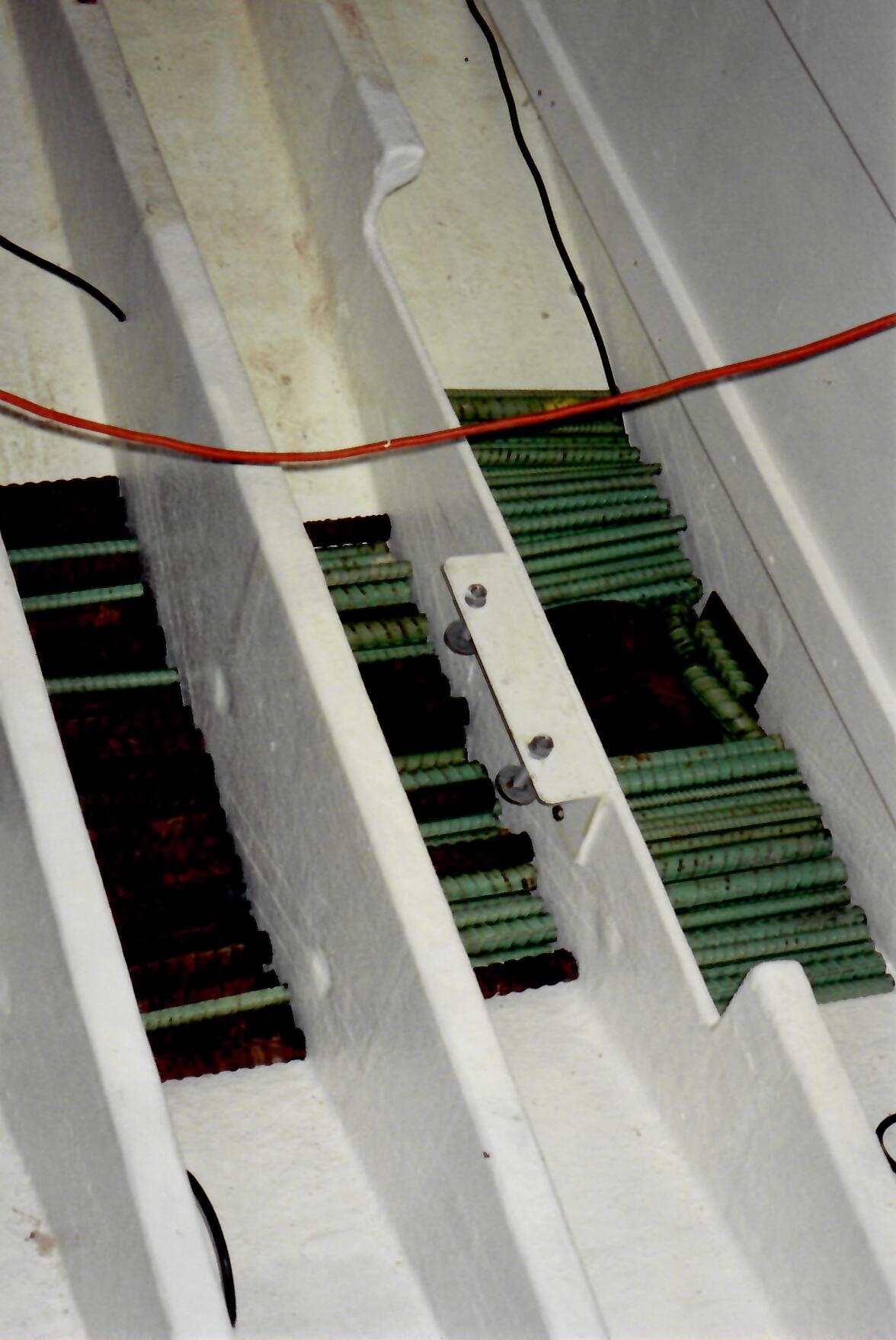Ballast - 2000
I wanted to use lead, but the price was so high, up to .50 per pound that using it was prohibitive. We needed to put in 14,000 pounds, so I didn't want to waste $7,000, with which I could have bought a small airplane. The thought of putting the equivalent of a small airplane in the bilge and covering it up was unthinkable..
So low and behold a trip to the local recycling yard yielded a whole dumpster full of reinforcing rod. You know the stuff they use in cement. It is steel round stock with a lot of bumps on it. Well it seems this stuff was left over from the local Clinton dock rebuild project and it was coated with epoxy to prevent rusting from the sea water. Because it was covered with epoxy the scrap yards can't take it to melt down, something about environmental impact. So this was the first time the government has been on my side! I bought the whole works for $400.00, delivered! Yes there is a GOD.
So the next question was... how to get it into the ship when it arrived all tangled and twisted as shown below. Yikes!
So low and behold a trip to the local recycling yard yielded a whole dumpster full of reinforcing rod. You know the stuff they use in cement. It is steel round stock with a lot of bumps on it. Well it seems this stuff was left over from the local Clinton dock rebuild project and it was coated with epoxy to prevent rusting from the sea water. Because it was covered with epoxy the scrap yards can't take it to melt down, something about environmental impact. So this was the first time the government has been on my side! I bought the whole works for $400.00, delivered! Yes there is a GOD.
So the next question was... how to get it into the ship when it arrived all tangled and twisted as shown below. Yikes!

